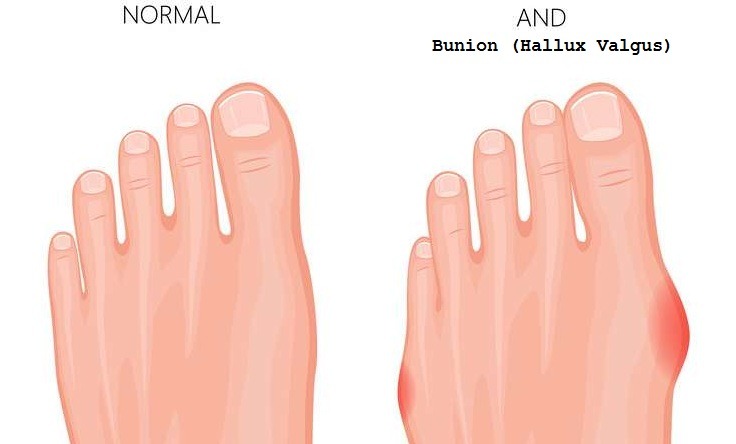Bunion, also known as hallux valgus, is a common medical condition that affects the big toe, causing it to turn inward towards the other toes. For those with severe bunions, surgery may be necessary to correct the problem. In this article, we will explore what happens during bunion surgery, from pre-operative preparations to post-operative care.
Pre-operative Preparations
Before surgery, your doctor will conduct a thorough evaluation to determine the best course of action for your specific case. This may involve X-rays, MRI scans, or other diagnostic tests to assess the extent of the deformity and any related damage.
Your doctor may also advise you to quit smoking at least two weeks before the surgery. Smoking can interfere with the healing process, and it may also increase the risk of complications during and after the surgery. Additionally, you may need to stop taking certain medications, such as blood thinners or nonsteroidal anti-inflammatory drugs (NSAIDs), as they can increase the risk of bleeding during surgery.
Bunion Surgery Day Experience
On the day of your bunion surgery, you will be asked to arrive at the hospital or surgical center several hours before the scheduled procedure. This will allow time for you to check in, complete any necessary paperwork, and prepare for the surgery.
Once you are ready, you will be taken to a pre-operative area where a nurse or other medical professional will prepare you for the surgery. This may include inserting an IV line to administer fluids and medications, such as antibiotics or pain relievers.
After you are fully prepared, you will be taken to the operating room where your doctor and a team of medical professionals will be waiting. You will be given anesthesia, which may be general anesthesia or local anesthesia depending on your specific needs and medical history.
The Surgery Process
There are several different surgical techniques that may be used to correct bunions, depending on the severity of the deformity and other factors. The most common technique is known as a bunionectomy, which involves removing the bony bump on the side of the big toe and realigning the joint.
During the surgery, your doctor will make one or more small incisions near the affected area. They will then use specialized instruments to remove the bony bump and realign the joint. In some cases, pins, screws, or other devices may be used to hold the bones in place as they heal.
The length of the surgery can vary depending on the specific technique used and the extent of the deformity. In general, the procedure takes about 1-2 hours.
Post-operative Care
After surgery, you will be taken to a recovery room where medical staff will monitor your vital signs and ensure you are comfortable. You will likely experience some pain and discomfort, which can be managed with medications prescribed by your doctor.
To promote healing and minimize the risk of complications, you will need to keep the affected foot elevated and avoid putting weight on it for a period of time, typically several weeks. Your doctor may also recommend physical therapy or other forms of rehabilitation to help restore strength and mobility to the affected area.
Frequently Asked Questions (FAQs)
How long does bunion surgery take?
The length of the surgery can vary depending on the specific technique used and the extent of the deformity. In general, the procedure takes about 1-2 hours.
When can I return to normal activities after bunion surgery?
It can take several weeks or even months to fully recover from bunion surgery. Your doctor will provide specific instructions based on your individual case, but in general, you will need to avoid putting weight on the affected foot and engage in gentle rehabilitation exercises before returning to normal activities.
Can bunion surgery be done on both feet at the same time?
It is possible to have surgery on both feet at the same time, but this is generally not recommended due to the increased risk of complications and the difficulty of managing recovery for both feet simultaneously.
Is bunion surgery covered by insurance?
In most cases, bunion surgery is considered a medically necessary procedure and is covered by insurance. However, it is important to check with your insurance provider to understand your specific coverage and any associated costs.
Wrapping it all up…
Bunion surgery is a common and effective treatment option for those with severe cases of this condition. The surgery process involves pre-operative preparations, anesthesia, the surgical procedure, and post-operative care. With proper care and rehabilitation, you can expect to recover fully and return to your normal activities.
On the day of the surgery, you can expect to be in a hospital or surgical center for several hours before the procedure. It is important to follow all pre-operative instructions from your doctor, including quitting smoking and stopping certain medications, to minimize the risk of complications.
After the surgery, you will need to take steps to promote healing and avoid putting weight on the affected foot. This may involve using crutches or other mobility aids and engaging in physical therapy or rehabilitation exercises.
Overall, bunion surgery can be a life-changing procedure for those who have been living with pain and discomfort. If you are considering this option, be sure to discuss the benefits and risks with your doctor and ask any questions you may have.










